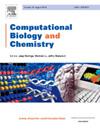人类去势抵抗性前列腺癌的转录组学分析:对新治疗策略的见解
IF 2.6
4区 生物学
Q2 BIOLOGY
引用次数: 0
摘要
前列腺癌是全球男性癌症相关死亡的主要原因。雄激素剥夺疗法(ADT)是晚期前列腺癌的标准治疗;然而,疾病进展为去势抵抗性前列腺癌(CRPC)提出了一个重大的治疗挑战。在这项研究中,我们采用转录组学分析来研究CRPC的关键遗传驱动因素并确定新的治疗靶点。利用RNA-seq数据和生物信息学工具,我们确定了与肿瘤进展、细胞骨架动力学和免疫调节相关的差异表达基因(DEGs),包括COL3A1、MYH4、FN1、ACTN1和CALR。功能富集分析显示,肌动蛋白-肌球蛋白丝滑动、钙信号、雄激素受体信号、免疫逃避和代谢途径显著参与CRPC的进展和治疗耐药性。此外,分子对接研究表明,关键的crpc相关基因(ABCC4和FOLH1)与潜在的治疗配体(包括氟他胺和n -乙酰氨基葡萄糖(NAG))之间存在很强的结合相互作用,突出了它们在克服耐药方面的治疗潜力。这些发现为CRPC的分子结构提供了新的见解,并支持了精确靶向治疗的发展,以改善患者的预后。本文章由计算机程序翻译,如有差异,请以英文原文为准。
Transcriptomic analysis of human castration-resistant prostate cancer: Insights into novel therapeutic strategies
Prostate cancer is a major cause of cancer-related deaths in men worldwide. Androgen deprivation therapy (ADT) is the standard treatment for advanced prostate cancer; however, disease progression to castration-resistant prostate cancer (CRPC) presents a significant therapeutic challenge. In this study, we employed transcriptomic analysis to investigate key genetic drivers of CRPC and identify novel therapeutic targets. Using RNA-seq data and bioinformatics tools, we identified differentially expressed genes (DEGs) associated with tumor progression, cytoskeletal dynamics, and immune modulation, including COL3A1, MYH4, FN1, ACTN1, and CALR. Functional enrichment analysis revealed significant involvement of actin-myosin filament sliding, calcium signaling, androgen receptor signaling, immune evasion, and metabolic pathways, underscoring their roles in CRPC progression and treatment resistance. Additionally, molecular docking studies demonstrated strong binding interactions between key CRPC-related genes (ABCC4 and FOLH1) and potential therapeutic ligands, including flutamide and N-acetyl glucosamine (NAG), highlighting their therapeutic potential in overcoming drug resistance. These findings provide novel insights into the molecular landscape of CRPC and support the development of precision-targeted therapies to improve patient outcomes.
求助全文
通过发布文献求助,成功后即可免费获取论文全文。
去求助
来源期刊

Computational Biology and Chemistry
生物-计算机:跨学科应用
CiteScore
6.10
自引率
3.20%
发文量
142
审稿时长
24 days
期刊介绍:
Computational Biology and Chemistry publishes original research papers and review articles in all areas of computational life sciences. High quality research contributions with a major computational component in the areas of nucleic acid and protein sequence research, molecular evolution, molecular genetics (functional genomics and proteomics), theory and practice of either biology-specific or chemical-biology-specific modeling, and structural biology of nucleic acids and proteins are particularly welcome. Exceptionally high quality research work in bioinformatics, systems biology, ecology, computational pharmacology, metabolism, biomedical engineering, epidemiology, and statistical genetics will also be considered.
Given their inherent uncertainty, protein modeling and molecular docking studies should be thoroughly validated. In the absence of experimental results for validation, the use of molecular dynamics simulations along with detailed free energy calculations, for example, should be used as complementary techniques to support the major conclusions. Submissions of premature modeling exercises without additional biological insights will not be considered.
Review articles will generally be commissioned by the editors and should not be submitted to the journal without explicit invitation. However prospective authors are welcome to send a brief (one to three pages) synopsis, which will be evaluated by the editors.
 求助内容:
求助内容: 应助结果提醒方式:
应助结果提醒方式:


